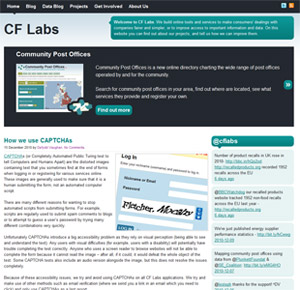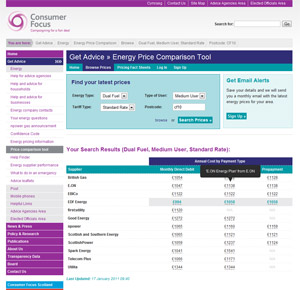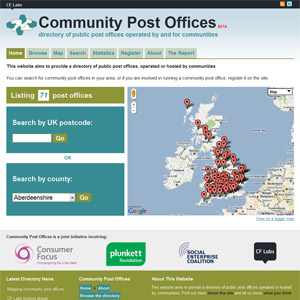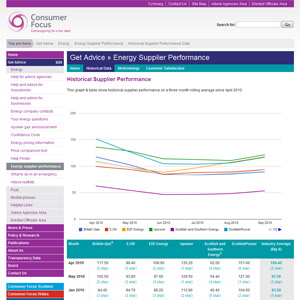Whenever there has been an extended gap in my blogging I try and find something to get it going again. It usually involves some kind of recap of the missing months to try and fill in the gap. This time is different only in the sheer amount of things that have happened. Over the last six months I’ve moved house, worked on (and launched) five major projects for CF Labs, begun work on three more and my employer has been abolished.
July 2010
Throughout July I spent time working on the recently launched StayPrivate.org website. As users sent in feedback we evaluated and tweaked the interface to reduce problems.
Also in July
- 1st – Coalition government launched the Your Freedom website to collect ideas for laws which should be repealed. This was almost immediately followed by embeddable campaign widgets built by Steph Gray.
- 20th – Directgov moved from Department for Work and Pensions to the Cabinet Office
- 28th – Reports suggested Directgov could face a funding cut of a third in the government’s spending review
- 29th – The new legislation.gov.uk website launched to provide a fantastic repository of all UK legislation
August 2010
As with July, plenty of time was spent evaluating and implementing changes to StayPrivate.org following user feedback. Late in the month we blogged about some of the issues users were having and the reasons behind them. We also launched a revamped FAQ to answer as many of the common questions as possible.
A large number of other projects also took up time during August –all of which launched before the end of 2010.
Also in August
- 3rd – Reports suggested nearly 300 job losses (40% of staff) were expected at COI.
- 17th – A consultation into the future of Directgov was launched
- 25th – Cheshire West & Chester Council announced it planned to charge for FOI requests
September 2010

In early September we launched a new website for CF Labs to showcase our work and host our blog. The existing website included a heavy focus on ideas for potential future projects but we decided to change the focus to projects that had already been completed.
As the CF Labs site was built using WordPress, we developed a new template to take advantage of all the new features added into WordPress 3.0. We used Custom Post Types to provide a page for each of our projects which includes an introduction to the work and associated images. We also used tags to show the latest three blog posts related to each project.
Also in September I stumbled across a fantastic open-source tool (Tweet Nest) for creating a searchable archive of a user’s tweets. In the past, I’d used various methods to create such an archive but none of them worked as well as this. You can see a working example using my tweets here.
I’m considering using this tool to create an archive of tweets from the various Consumer Focus twitter accounts.
Also in September
- 13th – Information Commissioner forced Brent Borough Council to respond to requests made through the WhatDoTheyKnow website. Brent had been refusing to do so citing copyright as the reason.
- 22nd – The government’s Director for Digital Engagement – Andrew Stott – announced he was to retire in December. Katie Davis was to take over on a temporary basis
- 30th – Government released the Open Government Licence for Public Sector Information. This licence allows people to openly reuse government information. We now use this licence on all CF Labs projects where we have data to be released.
October 2010

In October we completed the second phase of the new Consumer Focus website. Earlier in the year we made the move from an external proprietary content management system to a WordPress system managed in house by CF Labs. The second phase of work involved a complete restructure of the content and a refreshed website template.
As with the new CF Labs in September, we used WordPress 3.0 and built new templates for each of the Consumer Focus Nations (GB, Wales, Scotland & Northern Ireland). New areas were created for advice, policy work and publications.
We launched the site just in time to hear rumours that Consumer Focus was to be abolished in the Government’s “bonfire of the quangos”. It turned out that the rumours were true. The intention is to transfer some of our functions to Citizens Advice and Citizens Advice Scotland.
Even now, 4 months later, we still don’t know exactly when or how this transfer will happen.
Also in October
- 7th – Rumours suggested that Consumer Focus was to be abolished
- 14th – Review of quangos published – Consumer Focus to be abolished and some functions transferred to Citizens Advice / Citizens Advice Scotland
- 19th – Consumer Focus began publishing organisation charts and pay data on our website under the Open Government Licence.
- 20th – Government announced that all public services will be provided online by default in future
- 20th – Government announced its Comprehensive Spending Review involving huge cuts to public services
- 29th – The Public Bodies Bill (which will enable government to abolish & merge large numbers of organisations) was introduced to Parliament.
November 2010

November was a quiet month – mostly spent finalising work on three projects that were due to launch before the year came to a close.
At the end of the month we launched the second phase of the Consumer Focus Energy Price Comparison (EPC) Service. The EPC acts as a mini-price comparison system and gives you a rough idea of the price to expect when shopping around for an energy supplier. Consumer Focus inherited this system from our predecessor Energywatch. Earlier in 2010 we’d shifted the system to a new data supplier and rebuilt it so we could manage it in house to save money.
The second phase of development involved producing a brand new front end to make the system easier to use. We gave it the CF Labs treatment and integrated it with the Consumer Focus website design. We cleaned up the code, added a bunch of features and created bookmarkable URLs for every search.
Also in November
- 4th – I finally made it to a #teacamp event – a meet up of public sector web guys that happens every month in a cafe in Westminster.
- 4th – My old primary school destroyed in a fire
- 12th – Eric Pickles (Secretary of State for Communities & Local Government) blocked councils from charging for Freedom of Information requests
- 12th – Daily Mirror reported that all public sector websites are to be merged into a supersite run by the Cabinet Office
- 13th – A fellow public servant was cruelly attacked by a nasty columnist in the Daily Mail for tweeting
- 14th – The Independent jumped onto the attack bandwagon
- 17th – More rumours surfaced of Directgov taking over all public sector websites
- 19th – A prototype tool for showing structured organisation diagrams launched
- 19th – The CEO of Directgov resigned
- 19th – Consumer Focus published details of all spending over £25,000 for April-October using the Open Government Licence
- 21st – The board of Directgov was dissolved
- 22nd – The Number10 petition service was shelved permanently.
- 23rd – Martha Lane Fox published her review into the future of Directgov. The review recommends the creation of a single ‘Head of Digital’ within the Cabinet Office.
December 2010
In early December we launched a directory of post offices owned by and operated for communities across the UK. Consumer Focus commissioned the Plunkett Foundation and Social Enterprise Coalition to compile the data which CF Labs then presented through this site.
The site allows users to search for community post offices in their area, find out where they are located and see what services they provide. The site also provides some statistics on core activities and the data is exposed in JSON format.
A few days later we launched a service to publish ratings of how energy companies handle complaints. We’d worked closely with our colleagues in the Energy team at Consumer Focus to design and develop a meaningful way of showing this data. We produced a number of prototypes which were refined through several stages to a shortlist of 3 possible options. These were then independently tested by TNS-BMRB in September which helped us to pick the final option.
The system ranks each of the ‘Big Six’ energy suppliers using stars – 0 for the worst performing companies, 5 for the best. The site publishes a snapshot of the data (the last quarter) and also a more detailed historical view. All the data is also published using JSON and CSV formats.

